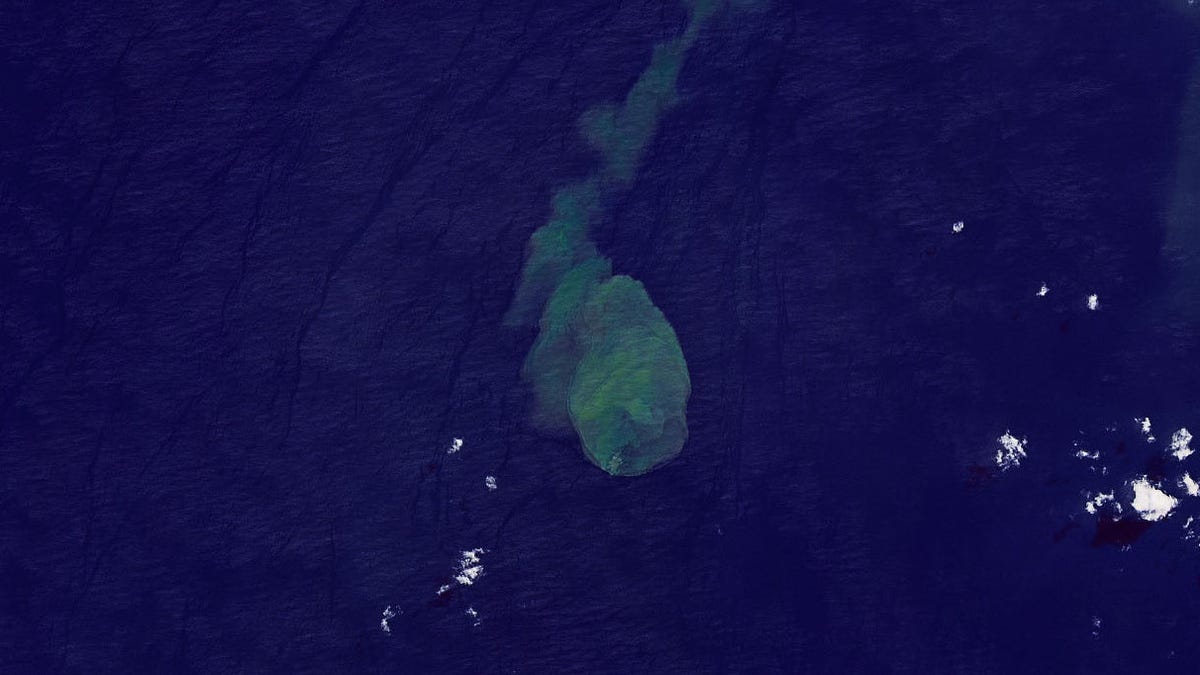'Sharkcano': NASA Spots Eruption of Underwater Volcano Where Sharks Live
"You've heard of sharknado, now get ready for sharkcano," NASA Goddard said.
NASA should consider getting into the cheesy disaster movie business. It already has an elevator pitch for a low-budget film. "You've heard of sharknado, now get ready for sharkcano," NASA's Goddard Space Flight Center tweeted on Sunday.
NASA hasn't lost its mind. Goddard shared an image from the Earth-observing Landsat 9 satellite showing a disturbance in the ocean. "The Kavachi Volcano in the Solomon Islands is home to two species of sharks," Goddard explained. "It's also one of the most active submarine volcanoes in the Pacific, seen here erupting underwater by Landsat 9."
🦈 You’ve heard of sharknado, now get ready for sharkcano.
— NASA Goddard (@NASAGoddard) May 22, 2022
The Kavachi Volcano in the Solomon Islands is home to two species of sharks. It’s also one of the most active submarine volcanoes in the Pacific, seen here erupting underwater by #Landsat 9.https://t.co/OoQU5hGWXQ pic.twitter.com/vEdRypzlgi
According to NASA's Earth Observatory, Kavachi started erupting in October last year and satellite images showed the change in water color in April and May of this year. The volcano's summit is about 65 feet (20 meters) below the waves.
A wider satellite view shows Kavachi discoloring the water just south of Vangunu Island.
We've established the volcano part of the equation, but what about the sharks? A 2015 expedition, detailed in a paper published in Oceanography, found hammerhead and silky sharks living in the hot and acidic environment of the volcano's crater. "The ecosystem that is supported by the extreme environment of Kavachi's crater may offer clues to the types of animals that have survived past major changes in ocean chemistry, and those that will thrive in future ocean conditions," the study said.
Kavachi has a long history of eruptions, and it's looking to continue that streak. Now NASA just needs to check if Ian Ziering is available, then round up a film crew and some underwater chainsaws.


